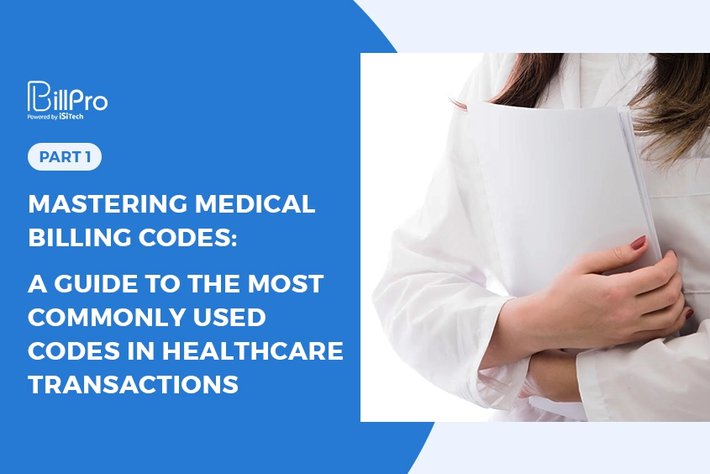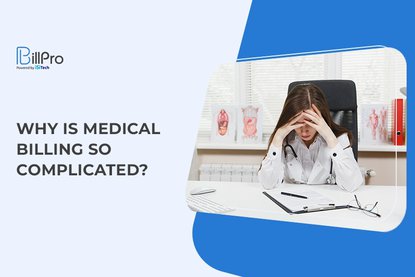Medical billing codes are crucial elements used for processing medical and healthcare services. It helps hospitals and insurance companies identify the treatments and procedures a patient receives and charge for them appropriately.
The codes are used by insurance companies to reimburse healthcare facilities. They also help researchers study trends in procedures and treatments.
Most companies use medical billing software like NYBillPro to automate coding for these transactions. Software makes it easy for providers to find and use the correct codes for the right treatments. Because these codes are very extensive and detailed, certification is required to become a medical coder.
Let’s explore the most common medical billing codes used in healthcare facilities.
Types of Medical Coding
There are five types of medical coding used in healthcare. These classifications depend on the treatments or procedures given to the patient.
Current Procedural Terminology (CPT)
This type of coding is used for reporting medical services. It increases the efficiency and accuracy for insurance providers to identify the treatments provided.
Developed by the American Medical Association (AMA), it is used by healthcare providers to bill insurance companies.
International Classification of Diseases (ICD-11)
This coding is the World Health Organization’s (WHO) diagnostic classification system used to classify diseases. It can be used to study the consequences and causes of illness and death.
The ICD is used in the healthcare industry to report on diseases and their related health conditions. These codes ensure that comparing and monitoring global health is standardized across all regions and countries. This is the 11th version of this coding resource.
ICD-10 Clinical Modification (CM)
The ICD-10 is the 10th version of the coding resource. They are used to classify mortality data based on death certificate information.
ICD-10 Procedure Coding System (PCS)
These codes are used to support procedures, including data collection, electronic health records, payment, and billing. This is very important for patients receiving Medicare and Medicaid.
The Healthcare Common Procedure Coding System (HCPCS)
This system of codes describes medical procedures and supplies used for each patient. The Centers for Medicare and Medicaid Services (CMS) developed this system to standardize billing payments.
This system has two parts: Level I and Level II. Level II identifies supplies, services, and products that are not included in the CPT system. These include transport or ambulance services, medical equipment, orthotics, and other equipment used outside a clinic or healthcare facility.
The Benefits of Medical Coding

The United States uses medical billing codes to improve the efficiency and accuracy of the healthcare system. Because citizens have very limited public health options, insurance companies and healthcare facilities work together to provide the best care for patients.
Medical billing and coding companies use these codes to standardize the treatments and procedures given to patients. This makes it easier for insurance companies to identify the treatments or procedures patients are entitled to under their policies.
Here are the benefits of using medical billing coding systems:
Standardization
These systems use a standard code or language that all parties can understand. This minimizes misunderstandings and miscommunications and increases accuracy in billing and payment processes.
Data Collection and Analysis
Using medical billing codes helps researchers and analysts track trends in the healthcare industry. They can observe data patterns regarding specific treatments and diseases. This helps medical experts make data-driven decisions for public health policies and healthcare delivery.
Prevention of Fraud
Using the correct medical billing codes prevents fraud within the payment process. The codes include specific guidelines and classifications that define particular materials, treatments, and supplies used for every transaction. These rigid data sets ensure accuracy on all fronts.
Payment and Reimbursement
Insurance companies use medical billing codes to calculate the amount they need to pay healthcare facilities for specific treatments. Accurate coding helps all parties review these calculations and ensure timely and correct payments.
Efficiency
Medical codes also make the payment processes more efficient. Since the language and codes used are standardized, it reduces administrative costs, avoids duplicates, limits errors, and speeds up each step.
Popular Medical Billing Codes
Medical Billing Code 00066
This is an ICD code that covers skin ulcerations. It includes the incidence, prevalence, and outcomes.
Medical Billing Code 00947
This code is under ICD and covers burns of internal organs. The billable conditions include the following:
-
Mouth and pharynx
-
Lung, trachea, larynx
-
Gastrointestinal tract
-
Esophagus
-
Uterus and vagina
-
Other specified and unspecified internal organs
Medical Billing Code 96372
This code covers the injection of substances or drugs into a patient’s skin or muscle. These include therapeutic, prophylactic, or diagnostic injections.
Medical Billing Code 97110
This code covers therapy procedures or exercises that develop strength and endurance. Each session lasts 15 minutes or less and covers a range of motions and flexibility exercises.
Patients go in for this procedure when they display decreased use or function of the arm or shoulder. Therapy is a one-on-one session that could cover one or several areas of concern.
Medical Billing Code 99072
This is used during a public health emergency (PHE). The covered expenses include supplies and clinical staff time.
For some insurance companies, this code indicates the following:
-
Payment for code claims is considered incidental to the course of treatment and will not be paid separately.
-
This code does not cover reimbursement policies under the Federal Employee Program.
-
This code will only be used when the medical service is provided in a facility that is not a hospital or clinic where the public health emergency was declared.
-
The code only covers PHEs such as a pandemic. Once the health emergency is declared over, the code is considered invalid.
Medical Billing Code 99203
This covers new patient or outpatient visits that last 30 to 44 minutes. The patient complained of a simple acute injury or stable chronic illness.
This code requires two things:
-
Appropriate medical history or an examination pertaining to the patient’s condition
-
Medical decision (low level)
Medical Billing Code 99204
This code identifies patient or outpatient visits in evaluation and management that require the following:
-
Comprehensive medical history
-
Comprehensive examination
-
Medical decision (moderate level)
-
Visit duration of 45 to 59 minutes
Under this code, patients likely have a progressing illness or acute injury. Their circumstances require complex medical management or a surgical procedure.
Medical Billing Code 99213
This code describes a patient’s healthcare office visit in terms of evaluation or management. Visits are only between 20 and 29 minutes, and no more.
This code implies a visit from a patient with a chronic but stable illness or an acute but simple injury. Using this code also implies that the decision-making needed for treatment is relatively low level. The treatment and medical history provided are appropriate for the patient’s condition.
Medical Billing Code 99214
This code is used for patient or outpatient visits for evaluation and management that last between 30 and 39 minutes. This is often used for visits that might require decisions at higher levels. It might also mean the patients require more time for evaluation.
This code implies that the patient has a progressive illness or complex injury that might need comprehensive medical management or possible surgery.
Medical Billing Code 99284
This code is for emergency department visits or unscheduled patient visits that require urgent medical care. It defines emergency departments as hospital-based facilities that are open 24 hours.
It does not differentiate between new or current patients that require immediate or urgent medical attention. The patient’s condition should have a high level of severity and must include the following components:
-
Detailed history
-
Detailed examination
-
Medical decision (moderate level)
Medical Coding is a Crucial System

The medical and healthcare industry has many stakeholders. It does not just involve hospitals, patients, and families. Insurance companies, third-party service providers, suppliers, and government programs are all crucial players that help provide the best health services to those who need them.
And to provide the best possible medical service, these distinct organizations need a standardized system to communicate and identify the specific service and procedure a patient needs.
This is where medical coding comes in. These codes ensure that the services are accurately described and thoroughly documented. It specifies the procedures and treatments that a health facility provides a patient, the medications given, and the amount that must be paid.
Accurate medical coding ensures that patients are billed correctly and fairly, and that insurance providers will pay the reimbursements according to the list of codes supplied by the healthcare provider.
It Pays to Know the Right Medical Billing Codes
The next time you go to your doctor, or receive an invoice from the hospital, check the medical billing codes. They specify your treatments, health condition, and the length of your evaluation or treatment.
Medical billing software like BillPro uses these codes for insurance claims, process payments, and reimbursements. So it pays to streamline your billing system and improve your efficiency with the right medical billing software.
Here you can check the second part of popular medical billing codes.

 0/5 (0 votes)
0/5 (0 votes)
 1001 views
1001 views



